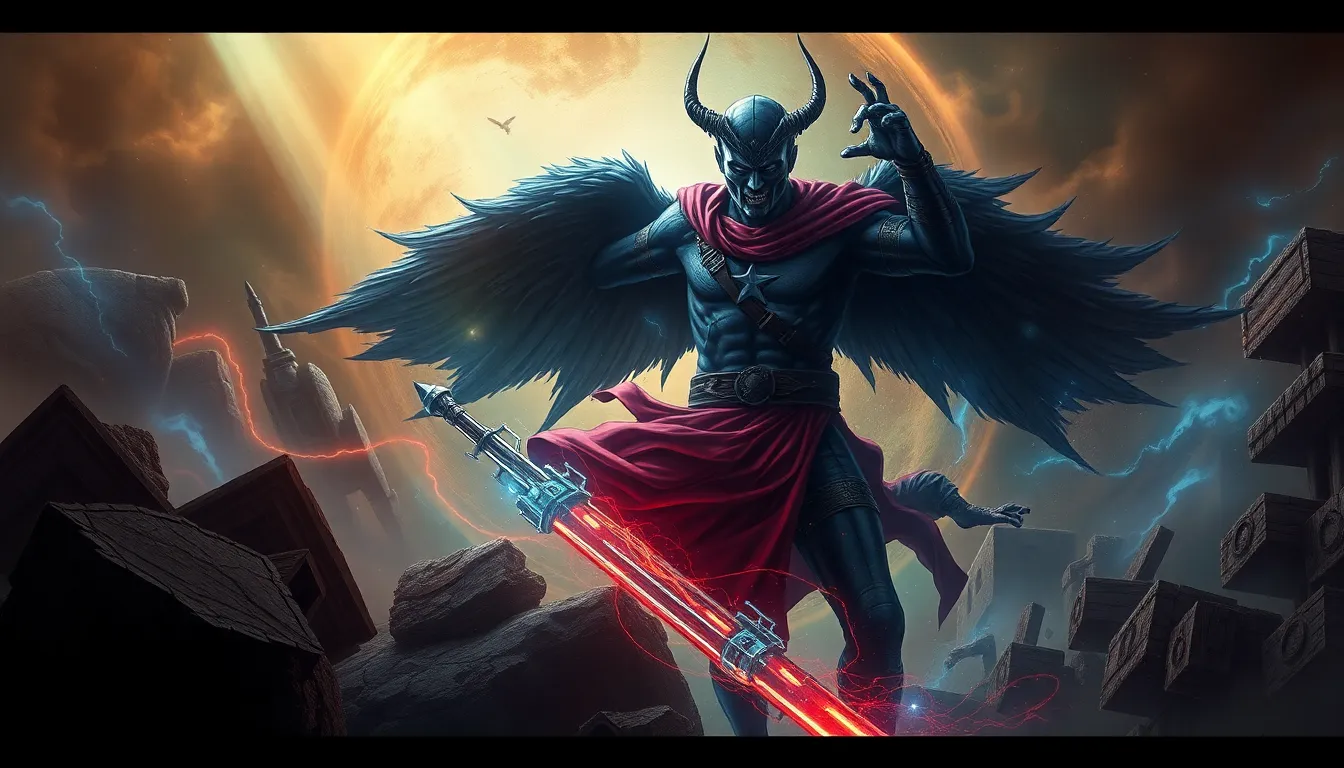The Most Outlandish Doomsday Myths in History
Introduction to Doomsday Myths
Doomsday myths have captivated human imagination for centuries, often reflecting societal fears and existential anxieties. These narratives typically revolve around catastrophic events that threaten to end civilization as we know it. The significance of doomsday myths lies not only in their narrative content but also in their ability to encapsulate the cultural and psychological factors that drive apocalyptic beliefs.
Throughout history, these myths have served various purposes: they provide a framework for understanding uncertainty, offer explanations for societal upheaval, and reflect deep-seated fears of the unknown. As such, they often emerge during times of great change, crisis, or perceived moral decline.
The Great Flood: Myths Across Cultures
One of the most pervasive doomsday myths is that of a great flood, which appears in numerous civilizations around the world. Two of the most notable examples include:
- Noah’s Ark: In the Judeo-Christian tradition, God decides to cleanse the world of its wickedness through a great flood, saving only Noah, his family, and pairs of each animal species.
- Epic of Gilgamesh: This ancient Mesopotamian text features a flood narrative similar to that of Noah, revealing the universal theme of divine retribution and the rebirth of humanity.
These flood myths symbolize renewal and the cyclical nature of life. They often carry moral lessons about humanity’s relationship with the divine and the consequences of moral decay.
The Year 1000: Medieval Fears of Apocalypse
The year 1000 marked a significant point in Christian eschatology, as many believed it would herald the end of the world. This belief stemmed from various interpretations of biblical prophecies and the widespread fear of the millennium.
As the year approached, communities reacted with a mix of dread and preparation. Some people:
- Engaged in fervent prayer and penance.
- Gave away their possessions to the poor.
- Gathered in churches, awaiting the Second Coming.
When the year passed without incident, the apocalyptic fervor subsided, but the psychological impact lingered, contributing to ongoing cycles of panic during subsequent millennia.
The Mayan Calendar and 2012 Predictions
The Mayan calendar gained international attention as December 21, 2012, approached, with many predicting it would signify the end of the world. Various interpretations emerged, suggesting that the Mayans had foreseen apocalyptic events due to the calendar’s cyclical nature.
The 2012 phenomenon permeated popular culture, inspiring films, books, and widespread media coverage. While some embraced the notion of impending doom, others dismissed it as a misinterpretation of Mayan culture. Regardless, the event highlighted society’s fascination with apocalyptic predictions and their potential impact on behavior and belief systems.
Nostradamus and His Prophecies
Nostradamus, a 16th-century French astrologer and physician, is renowned for his cryptic quatrains that many believe predict future events. Over the centuries, his prophecies have been interpreted in various ways, often in the context of significant historical occurrences.
Notable cases where Nostradamus is said to have predicted events include:
- The Great Fire of London in 1666.
- The rise of Adolf Hitler.
- The September 11 attacks in 2001.
Despite the vague nature of his writings, the allure of Nostradamus’ predictions continues to captivate audiences, reflecting a human desire to find meaning and foresight in chaotic times.
Y2K: The Technological Apocalypse
The turn of the millennium brought forth the Y2K bug, a technical glitch that many feared would lead to widespread chaos as computers transitioned from 1999 to 2000. Concerns centered around potential failures in critical systems, financial markets, and infrastructure.
As January 1, 2000 approached, a significant societal panic ensued, leading to:
- Government interventions and audits of technological systems.
- Businesses investing enormous resources to mitigate risks.
- Individuals stockpiling supplies in anticipation of potential disruptions.
In the aftermath, the Y2K bug served as a reminder of the vulnerabilities inherent in our technological advancements, prompting discussions about preparedness and resilience in the face of potential crises.
Planet X and the Nibiru Cataclysm
The Nibiru cataclysm is a modern doomsday myth suggesting that a hidden planet, Nibiru, would collide with Earth or come dangerously close, leading to global catastrophe. This myth gained traction in the late 20th century, fueled by various conspiracy theories and pseudoscientific claims.
Despite the lack of scientific evidence supporting the existence of Nibiru, the myth continues to circulate, demonstrating how fear and speculation can drive collective belief. Scientists have repeatedly debunked these claims, emphasizing the need for critical thinking and reliance on credible information.
Religious End Times Prophecies
Various religions possess their own end times prophecies, each offering unique perspectives on the culmination of human history. Some notable examples include:
- Christianity: The Book of Revelation outlines a series of events, including the Second Coming of Christ and the final judgment.
- Islam: The Hadith describes the Day of Judgment, where all individuals will be resurrected and judged by Allah.
- Hinduism: The concept of Kali Yuga represents a period of moral decline, leading to eventual renewal through divine intervention.
These beliefs can significantly impact followers, influencing their actions, lifestyles, and societal dynamics as they prepare for a perceived impending end.
Modern Doomsday Preppers and Survivalist Culture
In contemporary society, the rise of doomsday prepping reflects a growing concern over potential catastrophic events. This survivalist culture is characterized by individuals and groups who prepare for a wide range of scenarios, including natural disasters, economic collapse, or societal breakdown.
Factors contributing to the survivalist mindset include:
- Increased awareness of global crises, such as climate change and political instability.
- Media portrayals of apocalyptic scenarios.
- A desire for self-sufficiency and control in an unpredictable world.
This trend highlights the ongoing relevance of doomsday myths, as individuals seek to mitigate fear through preparation and resilience.
Conclusion: Lessons from Doomsday Myths
Doomsday myths have profoundly impacted societies throughout history, shaping cultural narratives and collective psychology. From ancient flood stories to modern technological anxieties, these myths offer insights into human behavior and societal fears.
As we navigate an increasingly complex world, the relevance of these myths persists, reminding us of our vulnerabilities and the need for preparedness. By understanding the origins and implications of doomsday beliefs, we can foster a deeper awareness of our collective psyche and the narratives that shape our realities.



